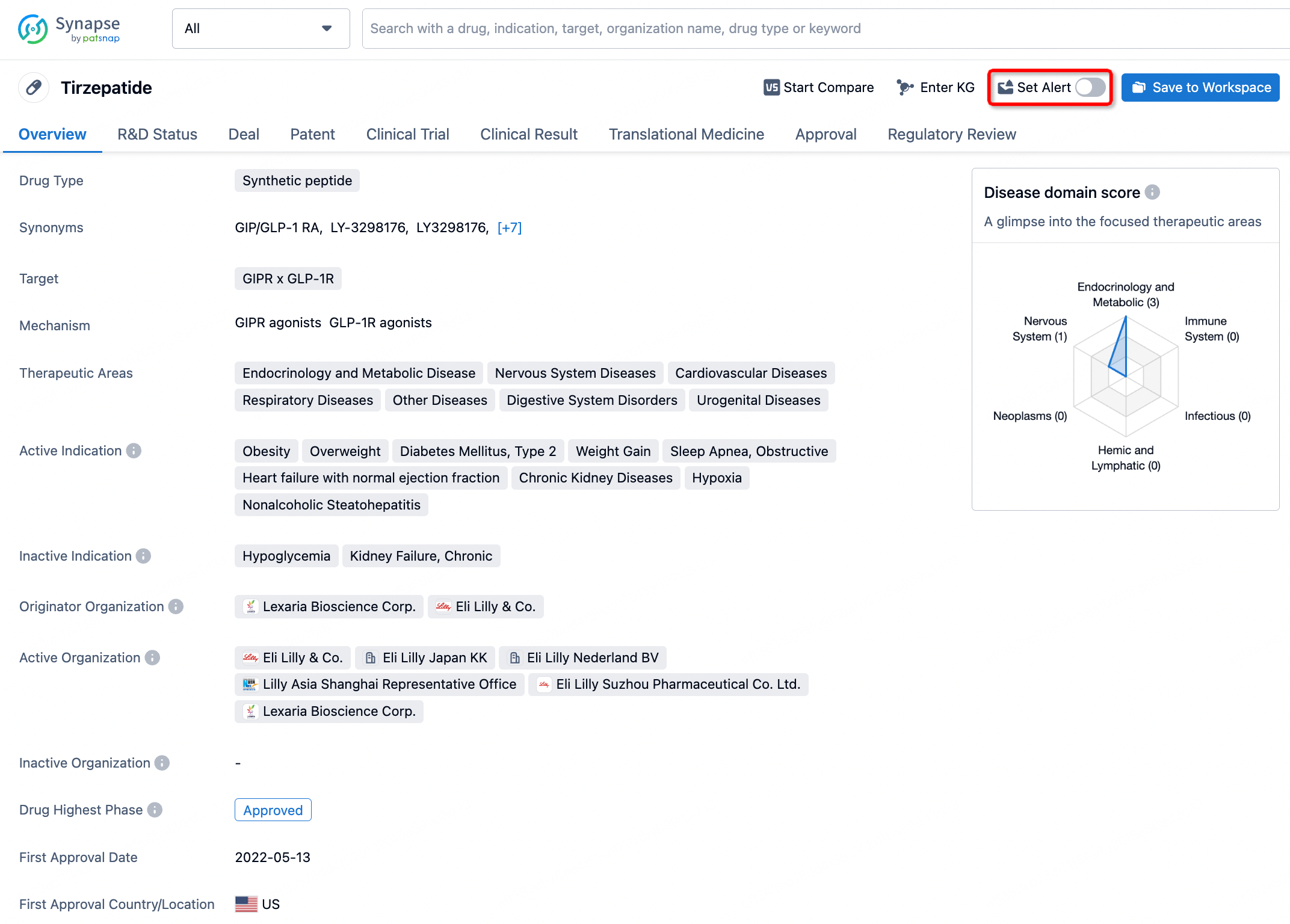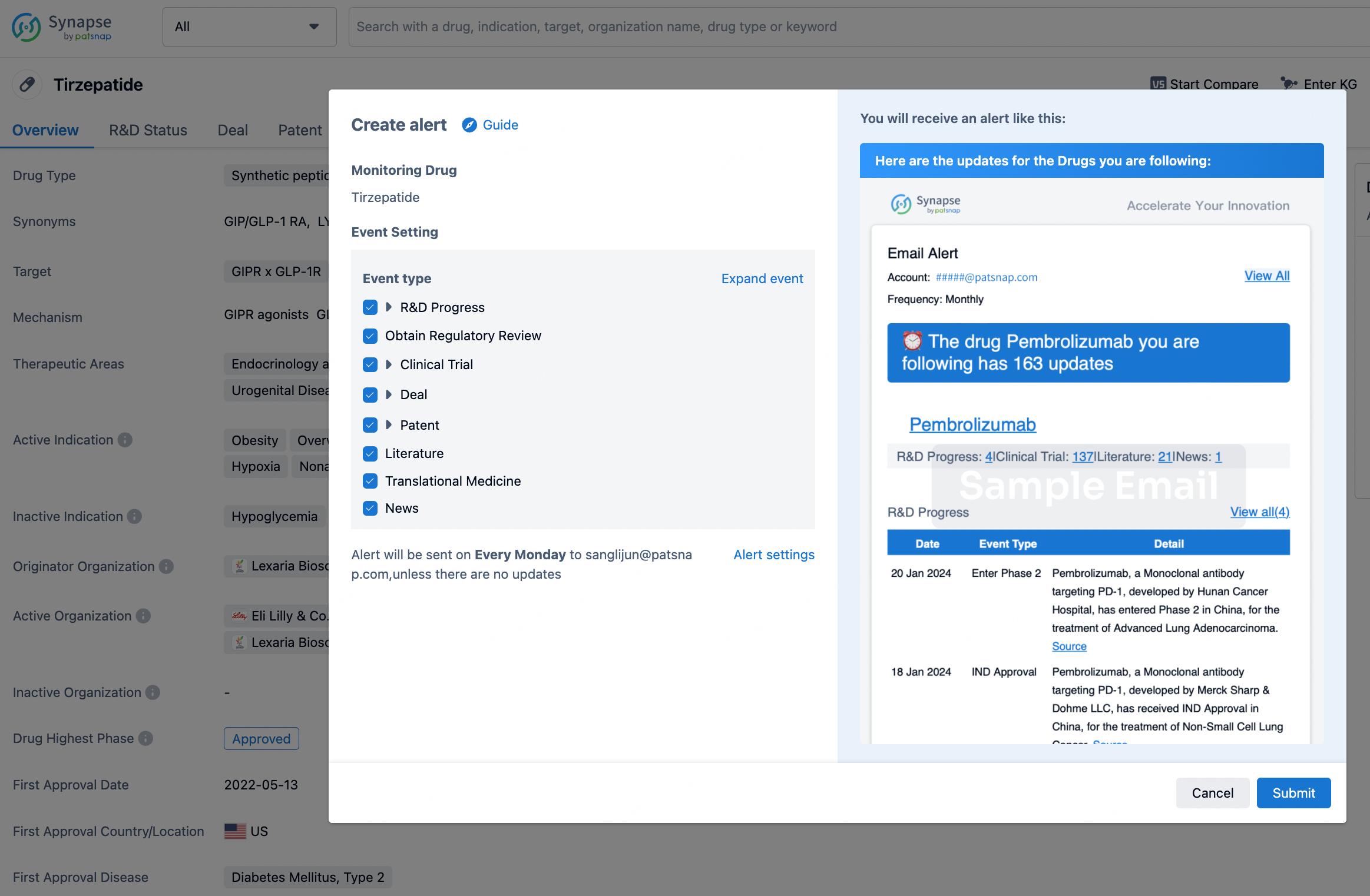Request Demo
What is the mechanism of Cycloserine?
18 July 2024
Cycloserine is an antibiotic that has garnered attention primarily for its role in the treatment of multidrug-resistant tuberculosis (MDR-TB). To understand the mechanism of cycloserine, it is essential to delve into both its chemical properties and its interaction with bacterial cellular processes.
Cycloserine, chemically known as D-cycloserine, is a broad-spectrum antibiotic that is structurally related to the amino acid D-alanine. Its mechanism of action is centered on inhibiting cell wall biosynthesis in bacteria. The bacterial cell wall is a critical component for maintaining cell integrity and shape, and any disruption in its formation can lead to cell lysis and death. Cycloserine targets two key enzymes involved in the synthesis of peptidoglycan, an essential component of the bacterial cell wall.
The first enzyme cycloserine targets is alanine racemase. Alanine racemase converts L-alanine to D-alanine, which is a necessary precursor in the synthesis of peptidoglycan. By inhibiting alanine racemase, cycloserine prevents the formation of D-alanine, thereby disrupting the production of peptidoglycan layers in the bacterial cell wall.
The second enzyme inhibited by cycloserine is D-alanine:D-alanine ligase. This enzyme is responsible for the formation of the D-alanine-D-alanine dipeptide, another crucial building block for peptidoglycan synthesis. By blocking this enzyme, cycloserine further hampers the construction of a functional cell wall.
The dual inhibitory action on alanine racemase and D-alanine:D-alanine ligase makes cycloserine particularly effective against Mycobacterium tuberculosis, the bacterium that causes tuberculosis. This dual inhibition is a crucial feature, given that bacterial resistance mechanisms often involve mutations in a single enzyme. Cycloserine's ability to target two different enzymes reduces the likelihood of resistance development, making it a valuable option in the fight against MDR-TB.
However, the use of cycloserine is not without its drawbacks. Due to its structure, cycloserine can cross the blood-brain barrier and influence neurotransmitter systems, particularly by acting as a partial agonist at the glycine site of the NMDA receptor. This can lead to neuropsychiatric side effects such as anxiety, depression, and psychosis, which limit its use in some patients. Therefore, careful monitoring and dose adjustments are necessary when cycloserine is prescribed.
To summarize, cycloserine's mechanism of action involves inhibiting key enzymes in the peptidoglycan synthesis pathway, which compromises bacterial cell wall integrity and leads to cell death. While it is especially effective against MDR-TB, its potential neuropsychiatric side effects necessitate cautious use. Understanding these mechanisms and side effects is crucial for healthcare providers to make informed decisions when treating infections with cycloserine.
Cycloserine, chemically known as D-cycloserine, is a broad-spectrum antibiotic that is structurally related to the amino acid D-alanine. Its mechanism of action is centered on inhibiting cell wall biosynthesis in bacteria. The bacterial cell wall is a critical component for maintaining cell integrity and shape, and any disruption in its formation can lead to cell lysis and death. Cycloserine targets two key enzymes involved in the synthesis of peptidoglycan, an essential component of the bacterial cell wall.
The first enzyme cycloserine targets is alanine racemase. Alanine racemase converts L-alanine to D-alanine, which is a necessary precursor in the synthesis of peptidoglycan. By inhibiting alanine racemase, cycloserine prevents the formation of D-alanine, thereby disrupting the production of peptidoglycan layers in the bacterial cell wall.
The second enzyme inhibited by cycloserine is D-alanine:D-alanine ligase. This enzyme is responsible for the formation of the D-alanine-D-alanine dipeptide, another crucial building block for peptidoglycan synthesis. By blocking this enzyme, cycloserine further hampers the construction of a functional cell wall.
The dual inhibitory action on alanine racemase and D-alanine:D-alanine ligase makes cycloserine particularly effective against Mycobacterium tuberculosis, the bacterium that causes tuberculosis. This dual inhibition is a crucial feature, given that bacterial resistance mechanisms often involve mutations in a single enzyme. Cycloserine's ability to target two different enzymes reduces the likelihood of resistance development, making it a valuable option in the fight against MDR-TB.
However, the use of cycloserine is not without its drawbacks. Due to its structure, cycloserine can cross the blood-brain barrier and influence neurotransmitter systems, particularly by acting as a partial agonist at the glycine site of the NMDA receptor. This can lead to neuropsychiatric side effects such as anxiety, depression, and psychosis, which limit its use in some patients. Therefore, careful monitoring and dose adjustments are necessary when cycloserine is prescribed.
To summarize, cycloserine's mechanism of action involves inhibiting key enzymes in the peptidoglycan synthesis pathway, which compromises bacterial cell wall integrity and leads to cell death. While it is especially effective against MDR-TB, its potential neuropsychiatric side effects necessitate cautious use. Understanding these mechanisms and side effects is crucial for healthcare providers to make informed decisions when treating infections with cycloserine.
How to obtain the latest development progress of all drugs?
In the Synapse database, you can stay updated on the latest research and development advances of all drugs. This service is accessible anytime and anywhere, with updates available daily or weekly. Use the "Set Alert" function to stay informed. Click on the image below to embark on a brand new journey of drug discovery!
AI Agents Built for Biopharma Breakthroughs
Accelerate discovery. Empower decisions. Transform outcomes.
Get started for free today!
Accelerate Strategic R&D decision making with Synapse, PatSnap’s AI-powered Connected Innovation Intelligence Platform Built for Life Sciences Professionals.
Start your data trial now!
Synapse data is also accessible to external entities via APIs or data packages. Empower better decisions with the latest in pharmaceutical intelligence.


